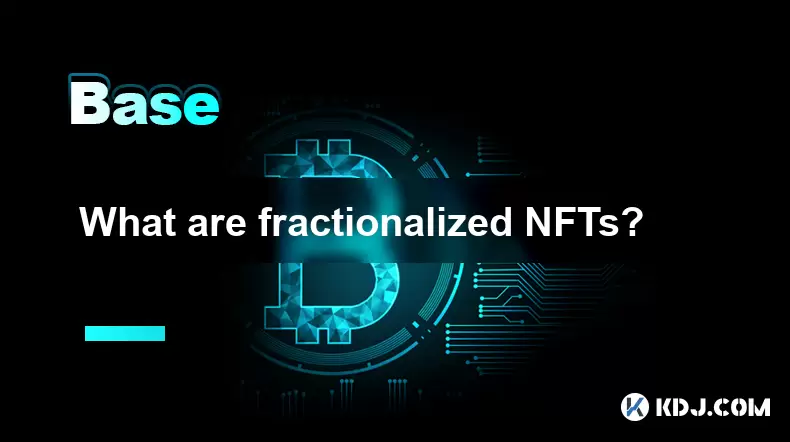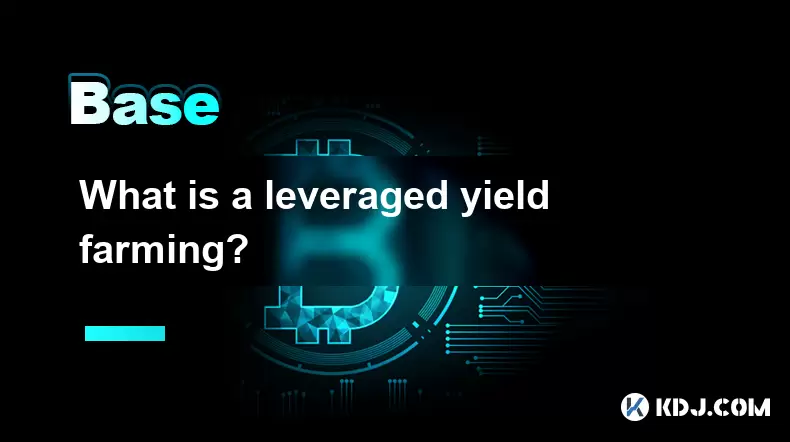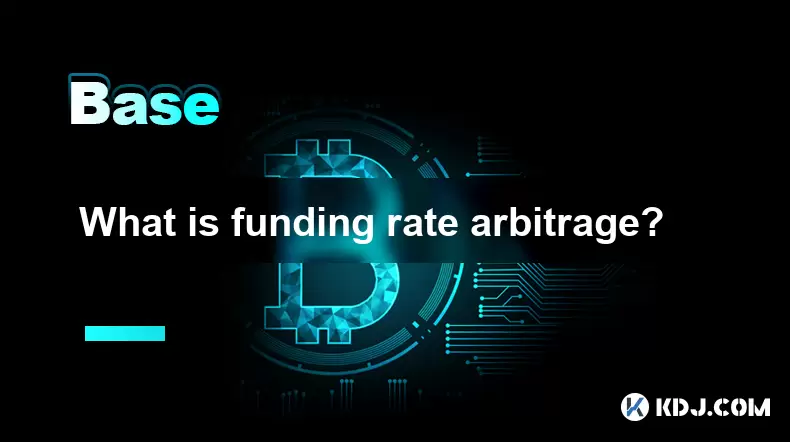-
 Bitcoin
Bitcoin $108,043.3894
-1.71% -
 Ethereum
Ethereum $2,519.1878
-3.09% -
 Tether USDt
Tether USDt $1.0004
-0.01% -
 XRP
XRP $2.2231
-2.72% -
 BNB
BNB $655.3607
-1.06% -
 Solana
Solana $148.3620
-2.84% -
 USDC
USDC $1.0000
0.00% -
 TRON
TRON $0.2838
-0.37% -
 Dogecoin
Dogecoin $0.1648
-4.79% -
 Cardano
Cardano $0.5759
-3.97% -
 Hyperliquid
Hyperliquid $38.4598
-5.19% -
 Sui
Sui $2.9005
-4.22% -
 Bitcoin Cash
Bitcoin Cash $481.1531
-3.80% -
 Chainlink
Chainlink $13.1936
-4.50% -
 UNUS SED LEO
UNUS SED LEO $9.0471
0.41% -
 Avalanche
Avalanche $17.9444
-4.20% -
 Stellar
Stellar $0.2378
-2.60% -
 Toncoin
Toncoin $2.7850
-3.38% -
 Shiba Inu
Shiba Inu $0.0...01148
-3.75% -
 Litecoin
Litecoin $87.3159
-3.73% -
 Hedera
Hedera $0.1557
-3.02% -
 Monero
Monero $314.0980
-1.98% -
 Polkadot
Polkadot $3.3909
-5.10% -
 Dai
Dai $1.0001
0.00% -
 Ethena USDe
Ethena USDe $1.0002
-0.02% -
 Bitget Token
Bitget Token $4.4147
-3.74% -
 Uniswap
Uniswap $6.9933
-9.59% -
 Pepe
Pepe $0.0...09661
-6.72% -
 Aave
Aave $264.1417
-6.16% -
 Pi
Pi $0.4705
-5.23%
What are fractionalized NFTs?
Fractionalized NFTs allow shared ownership of high-value digital assets by splitting them into tradable shares via blockchain smart contracts.
Jul 04, 2025 at 10:28 am

Understanding Fractionalized NFTs
Fractionalized NFTs refer to the process of splitting a single non-fungible token (NFT) into multiple smaller, fungible tokens. This allows multiple individuals to own a portion of the original NFT, effectively democratizing access to high-value digital assets. Each fractional token represents a share in the ownership of the underlying NFT. The concept is similar to how real estate can be divided into shares through Real Estate Investment Trusts (REITs), but applied to the blockchain and digital collectibles space.
This mechanism is particularly useful for expensive or rare NFTs that may be financially out of reach for individual collectors. By breaking down the asset into more affordable units, it becomes accessible to a broader audience. Smart contracts on platforms like Ethereum are typically used to manage the division and distribution of these fractional shares.
How Are NFTs Fractionalized?
The process of fractionalizing an NFT involves several key steps:
- Choosing a platform: Not all NFT marketplaces support fractionalization. Creators or owners must select a compatible service such as Fractional.art, DAOfi, or Unicly.
- Locking the NFT in a smart contract: The original NFT is transferred to a specialized smart contract that will manage its fractionalization.
- Creating fungible tokens: The smart contract generates a set number of ERC-20 tokens representing shares of the NFT. These tokens can be traded independently.
- Setting governance rules: Owners can define whether fractional token holders have voting rights, liquidity options, or other privileges related to the NFT.
These steps ensure that the process is transparent and secure. Once completed, the original NFT remains locked until a predefined condition—such as a buyout threshold—is met.
Why Would Someone Fractionalize Their NFT?
There are several motivations behind fractionalizing an NFT:
- Liquidity: High-value NFTs can be illiquid because they're difficult to sell quickly. Fractionalization allows the owner to unlock value without selling the entire asset.
- Price discovery: Selling shares in an auction or open market helps establish a fair price for the NFT based on demand.
- Community building: Collectors can involve a broader community in owning a rare piece, fostering engagement and shared interest.
- Access to capital: Owners can raise funds by issuing shares while retaining partial control over the asset.
For example, if someone owns a rare CryptoPunk worth $1 million, they could fractionalize it into 10,000 shares priced at $100 each. This enables others to invest smaller amounts while the original owner maintains some equity and influence.
What Are the Risks Involved?
While fractionalized NFTs offer exciting opportunities, they also come with risks:
- Smart contract vulnerabilities: Bugs or exploits in the code can lead to loss of funds or unauthorized transfers.
- Governance disputes: If fractional token holders have decision-making power, disagreements can arise over the future of the NFT.
- Market volatility: The value of the shares can fluctuate significantly based on trends, speculation, or changes in popularity.
- Legal ambiguity: Regulations around fractional ownership of digital assets remain unclear in many jurisdictions.
Investors should conduct thorough due diligence before participating in fractionalized NFT projects. Checking the reputation of the platform, reviewing the smart contract code, and understanding governance mechanisms are crucial steps.
How Can You Buy or Sell Fractionalized NFT Shares?
Buying and selling fractional NFT shares follows a process similar to trading cryptocurrencies:
- Connect a wallet: Use wallets like MetaMask or Trust Wallet to interact with the platform hosting the fractional NFT.
- Browse available fractions: Visit platforms like Fractional.art or Tessera to explore fractionalized NFTs.
- Purchase shares: Use ETH or stablecoins to buy ERC-20 tokens representing ownership stakes.
- Trade on secondary markets: Some platforms allow users to list their shares on decentralized exchanges like Uniswap.
Selling fractional shares works similarly. Token holders can list their shares for sale or participate in buyouts initiated by other investors who want to reconstitute the full NFT.
Frequently Asked Questions
Q: Can I fractionalize any NFT?
A: No, not all NFTs can be fractionalized. The NFT must be compatible with the platform's smart contract standards, and the owner must have full rights to transfer and lock the asset.
Q: What happens if someone buys all the fractional shares?
A: If one entity acquires all or a majority of the shares (based on pre-set thresholds), they can initiate a redemption process to reclaim the original NFT. Other shareholders receive compensation based on their share percentage.
Q: Are fractional NFTs taxable?
A: Yes, depending on your jurisdiction, buying, selling, or trading fractional NFTs may trigger capital gains taxes. It’s important to consult a tax professional familiar with cryptocurrency regulations.
Q: Who controls the NFT after fractionalization?
A: The NFT is held in a smart contract, and control is distributed among token holders according to the governance model defined during the fractionalization process.
Disclaimer:info@kdj.com
The information provided is not trading advice. kdj.com does not assume any responsibility for any investments made based on the information provided in this article. Cryptocurrencies are highly volatile and it is highly recommended that you invest with caution after thorough research!
If you believe that the content used on this website infringes your copyright, please contact us immediately (info@kdj.com) and we will delete it promptly.
- Bitcoin's Pattern Break: Are HODLers the Key to the Next Surge?
- 2025-07-04 18:50:12
- Bitcoin Price, Trump's Bill, and the $150K Dream: A NYC Take
- 2025-07-04 19:50:12
- Ethereum, LILPEPE, and the July Bounce: Will Pepe Steal ETH's Thunder?
- 2025-07-04 19:10:12
- Binance Institutional Loans: Unlocking 4x Leverage and Zero Interest for Whales
- 2025-07-04 19:15:12
- Bitcoin Bull Run: Analysts Eye Peak in Late 2025?
- 2025-07-04 19:20:13
- Pepe Indicators, Bullish Forecast: Can the Meme Coin Rally?
- 2025-07-04 19:25:12
Related knowledge

What is a user-generated content (UGC) NFT platform?
Jul 04,2025 at 01:49pm
Understanding the Concept of a UGC NFT PlatformA user-generated content (UGC) NFT platform is a digital marketplace or ecosystem where users can create, mint, and trade non-fungible tokens (NFTs) that represent ownership of original digital content they produce. Unlike traditional NFT platforms where creators often include professional artists or develo...

What is a token generation event (TGE)?
Jul 04,2025 at 07:14am
Understanding the Basics of a Token Generation Event (TGE)A Token Generation Event (TGE) refers to the process through which a blockchain project creates and distributes its native tokens to investors, participants, or stakeholders. This event is often associated with new cryptocurrency projects launching on platforms like Ethereum, Binance Smart Chain,...

What is a block explorer API?
Jul 04,2025 at 05:07am
Understanding the Role of a Block Explorer APIA block explorer API is a crucial interface that enables developers and users to interact programmatically with blockchain data. Unlike traditional APIs used in web services, a block explorer API specifically provides access to blockchain-related information such as transaction details, wallet balances, bloc...

What is a leveraged yield farming?
Jul 04,2025 at 09:36am
Understanding Leveraged Yield FarmingLeveraged yield farming is a more advanced form of yield farming, which itself is a popular method in the decentralized finance (DeFi) ecosystem to earn returns by providing liquidity to various protocols. In traditional yield farming, users deposit tokens into a DeFi platform and earn rewards in return, often in the...

What is open interest in derivatives?
Jul 03,2025 at 02:49pm
Understanding Open Interest in DerivativesOpen interest is a critical metric used in the cryptocurrency derivatives market, particularly when analyzing futures and options contracts. It represents the total number of outstanding contracts that have not been settled or closed by either party involved. Unlike trading volume, which counts all trades made i...

What is funding rate arbitrage?
Jul 04,2025 at 11:43am
Understanding Funding Rate Arbitrage in the Cryptocurrency MarketFunding rate arbitrage is a trading strategy employed by crypto traders to exploit differences in funding rates across various perpetual futures exchanges. In perpetual contracts, funding rates are periodic payments made between long and short traders depending on whether the price of the ...

What is a user-generated content (UGC) NFT platform?
Jul 04,2025 at 01:49pm
Understanding the Concept of a UGC NFT PlatformA user-generated content (UGC) NFT platform is a digital marketplace or ecosystem where users can create, mint, and trade non-fungible tokens (NFTs) that represent ownership of original digital content they produce. Unlike traditional NFT platforms where creators often include professional artists or develo...

What is a token generation event (TGE)?
Jul 04,2025 at 07:14am
Understanding the Basics of a Token Generation Event (TGE)A Token Generation Event (TGE) refers to the process through which a blockchain project creates and distributes its native tokens to investors, participants, or stakeholders. This event is often associated with new cryptocurrency projects launching on platforms like Ethereum, Binance Smart Chain,...

What is a block explorer API?
Jul 04,2025 at 05:07am
Understanding the Role of a Block Explorer APIA block explorer API is a crucial interface that enables developers and users to interact programmatically with blockchain data. Unlike traditional APIs used in web services, a block explorer API specifically provides access to blockchain-related information such as transaction details, wallet balances, bloc...

What is a leveraged yield farming?
Jul 04,2025 at 09:36am
Understanding Leveraged Yield FarmingLeveraged yield farming is a more advanced form of yield farming, which itself is a popular method in the decentralized finance (DeFi) ecosystem to earn returns by providing liquidity to various protocols. In traditional yield farming, users deposit tokens into a DeFi platform and earn rewards in return, often in the...

What is open interest in derivatives?
Jul 03,2025 at 02:49pm
Understanding Open Interest in DerivativesOpen interest is a critical metric used in the cryptocurrency derivatives market, particularly when analyzing futures and options contracts. It represents the total number of outstanding contracts that have not been settled or closed by either party involved. Unlike trading volume, which counts all trades made i...

What is funding rate arbitrage?
Jul 04,2025 at 11:43am
Understanding Funding Rate Arbitrage in the Cryptocurrency MarketFunding rate arbitrage is a trading strategy employed by crypto traders to exploit differences in funding rates across various perpetual futures exchanges. In perpetual contracts, funding rates are periodic payments made between long and short traders depending on whether the price of the ...
See all articles

























































































